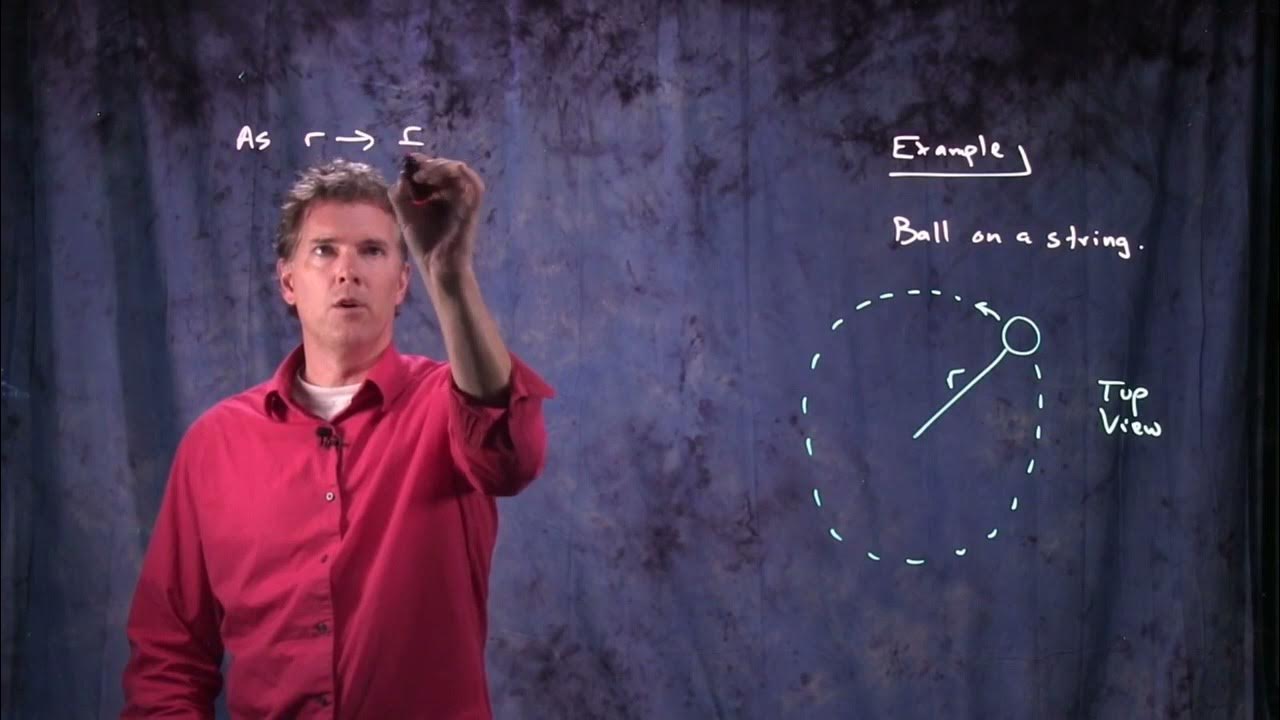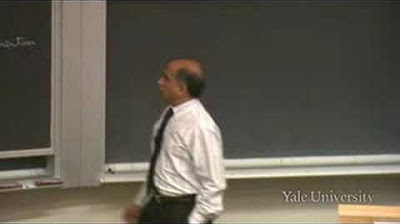The Bizarre Behavior of Rotating Bodies
TLDRThis episode delves into the Dzhanibekov effect, also known as the tennis racket theorem, offering an intuitive explanation for a perplexing phenomenon observed in space by cosmonaut Vladimir Dzhanibekov in 1985. After a dramatic mission to save the Soviet space station Salyut 7, Dzhanibekov noticed a wing-nut flipping 180 degrees in microgravity, a movement that defied expectations as it wasn't caused by external forces. This episode explores the history, physics, and implications of this effect, featuring insights into angular momentum and inertia, alongside a discussion on how this principle applies to other objects in space and the stability of planetary rotations. Sponsored by LastPass, the episode aims to demystify this complex phenomenon with a blend of scientific rigor and accessible explanation.
Takeaways
- 📺 The Dzhanibekov effect, also known as the tennis racket theorem or the intermediate axis theorem, involves a fascinating physical phenomenon where objects flip unexpectedly when spun in space.
- 🚀 Cosmonaut Vladimir Dzhanibekov first observed the effect in 1985 while on a mission to rescue the Soviet space station Salyut 7, noticing a wing-nut flipping back and forth in space without any apparent forces acting on it.
- 📝 The phenomenon remained a Soviet secret for a decade, until related research was published in 1991, though it didn't directly mention the Dzhanibekov effect.
- 📡 The effect is caused by the unique distribution of mass around an object's principal axes, leading to different moments of inertia and causing instability when rotating around the intermediate axis.
- 📈 Terry Tao, a renowned mathematician, provided an intuitive explanation involving a disc with different weighted masses to demonstrate how centrifugal forces cause the flipping action.
- 🏆 The understanding of the intermediate axis theorem dates back at least 150 years to Louis Poinsot's work, showing it's not a new concept in classical mechanics.
- ⚾ Not every object demonstrates the tennis racket theorem; it requires an asymmetric top with three distinct moments of inertia.
- 🚀 Speculation about the Earth flipping over, akin to the observed wing-nut behavior, stirred controversy and intrigue, especially among conspiracy theorists and in the context of the 2012 Mayan prophecies.
- ✅ Experiments in space, like those conducted by astronaut Don Pettit, and historical satellite issues highlight the importance of rotation axes and energy dissipation in understanding the stability of spinning objects.
- 🖥 LastPass sponsorship message underscores the importance of focusing mental energy on understanding complex phenomena, like the intermediate axis theorem, instead of mundane tasks like remembering passwords.
Q & A
What is the Dzhanibekov effect, also known as the tennis racket theorem or intermediate axis theorem?
-The Dzhanibekov effect, or the tennis racket theorem, refers to a phenomenon where an object with three different moments of inertia (like a tennis racket) flipped unexpectedly when rotated about its intermediate axis. This effect illustrates a counterintuitive behavior in rotational dynamics.
How did cosmonaut Vladimir Dzhanibekov discover the effect?
-In 1985, while on a mission to save the Soviet space station Salyut 7, cosmonaut Vladimir Dzhanibekov observed the effect when a wing-nut he was unpacking spun off a bolt, maintained its orientation, then flipped 180 degrees, and continued flipping at regular intervals without any external forces or torques.
Why was the Dzhanibekov effect kept secret for 10 years?
-The Dzhanibekov effect was initially kept secret by the Russians due to its counterintuitive and potentially significant implications in physics and possibly in space exploration, as the phenomenon was not widely understood at the time.
What does the 1991 paper 'The Twisting Tennis Racket' describe?
-The 1991 paper 'The Twisting Tennis Racket' discusses how a tennis racket, when flipped in the air, not only rotates as intended but also makes a half-turn around an axis through its handle, illustrating the intermediate axis theorem in a tangible way.
What are the three principal axes of rotation for a tennis racket mentioned in the video?
-The three principal axes of rotation for a tennis racket are: 1) an axis running through the handle, 2) an axis running parallel to the head of the racket, and 3) an axis running perpendicular to the head of the racket.
How is the moment of inertia related to the stability of an object's rotation?
-The moment of inertia affects an object's rotational stability. The smallest moment of inertia (axis through the handle) allows fast, stable rotation, while the largest moment of inertia (perpendicular to the head) results in slower, stable rotation. Rotation about the intermediate axis (parallel to the head) is unstable, leading to the flipping phenomenon.
What role does Louis Poinsot's work play in understanding the intermediate axis theorem?
-Louis Poinsot's work, especially his book 'The New Theory of Rotating Bodies', dating back over 150 years, lays foundational understanding of the intermediate axis theorem, showing that this concept in physics has a historical background and isn't a recent discovery.
What is Terry Tao's contribution to explaining the intermediate axis theorem?
-Terry Tao, a highly acclaimed mathematician, provided an intuitive explanation of the intermediate axis theorem. His explanation involves imagining a disc with different weighted masses placed on it, illustrating how rotation about different axes leads to different behaviors due to centrifugal and centripetal forces.
Why does the video suggest that the Earth will not 'flip over'?
-The video explains that the Earth, like other astronomical bodies, tends to spin about the axis with the maximum moment of inertia due to internal energy dissipation. This rotation is the most stable and energy-efficient, making a sudden 'flip over' of the Earth highly unlikely.
How does LastPass relate to the content of the video?
-LastPass, the sponsor of the video, is a password management service. While it doesn't directly relate to the scientific content, it's mentioned at the end as a tool for securing and managing passwords, paralleling the idea of simplifying complex tasks, much like understanding complex physics phenomena.
Outlines
🌌 Exploring the Dzhanibekov Effect
The video begins by introducing the Dzhanibekov effect, also known as the tennis racket theorem, using the historical anecdote of cosmonaut Vladimir Dzhanibekov's 1985 space mission where he noticed a wing-nut flipping in space. This phenomenon, which was kept secret by the Russians for a decade, involves an object flipping spontaneously in zero gravity without any apparent external forces. The effect is explored through the principle of rotating objects around their principal axes, highlighting the peculiar behavior when rotated around the intermediate axis. The narrative connects this physical phenomenon to broader scientific inquiries and historical references, setting the stage for a deeper investigation into the nature of rotational dynamics and inertia.
📚 Historical Context and Scientific Exploration
The second part delves into the history of the Dzhanibekov effect, tracing it back to the 19th century with Louis Poinsot's work and clarifying its established place in classical mechanics. Despite its foundational status, the effect garners fresh intrigue in the context of space exploration and microgravity, leading to viral social media speculation. The script discusses the public's fascination and the complexity of the mathematical explanation behind the phenomenon, with a nod to physicist Richard Feynman's perspective. The narrative transitions to mathematician Terry Tao's intuitive explanation of the effect through a simplified model, demonstrating the unique rotational dynamics involved.
🌍 Implications for Earth and Astronomical Bodies
The final segment contemplates the broader implications of the Dzhanibekov effect, particularly concerning Earth's stability in space. It addresses speculative fears of the Earth flipping over, akin to the wing-nut in Dzhanibekov's observation, debunking such theories by explaining the stabilizing effect of objects rotating around their axis of maximum inertia. This section leverages astronaut experiments and historical satellite challenges to illustrate the principle, culminating in a reassurance of Earth's rotational stability. The video closes with a promotional message for LastPass, linking the ease of managing passwords to the intellectual relief of understanding complex scientific phenomena.
Mindmap
Keywords
💡Dzhanibekov effect
💡Moment of Inertia
💡Angular Velocity
💡Torque
💡Asymmetric Top
💡Centripetal Force
💡Centrifugal Force
💡Angular Momentum
💡Kinetic Energy
💡Stability
💡LastPass
Highlights
Introduction of the Dzhanibekov effect, also known as the tennis racket theorem.
Explanation of the strange behavior observed by cosmonaut Vladimir Dzhanibekov in space with a wing-nut.
Revelation of Soviet-era secrecy surrounding the phenomenon for a decade.
Discussion on the stability of rotation around different axes and the concept of moment of inertia.
Insight into how different objects demonstrate the intermediate axis theorem based on their moments of inertia.
Historical context tracing the intermediate axis theorem back to Louis Poinsot's work 150 years ago.
Terry Tao's intuitive explanation involving a disc with different point masses to understand the effect.
Analysis of the forces acting on the disc when rotating about different axes.
The implications of Dzhanibekov's observations on the potential flipping of Earth.
Conspiracy theories and public fascination with the Dzhanibekov effect, especially in the context of Mayan prophecies.
Experimental demonstrations by astronaut Don Pettit on the space station to explain the phenomenon.
Understanding of how kinetic energy and angular momentum play roles in the stability of spinning objects.
Explanation of why the Earth and other astronomical objects tend to spin about their axes of maximum moment of inertia.
Assurance that the Earth will not undergo a flip due to its rotation about the axis of maximum moment of inertia.
Sponsorship by LastPass, highlighting the ease and security of managing passwords.
Transcripts
Browse More Related Video
5.0 / 5 (0 votes)
Thanks for rating:





